Divan-e Hafiz is an apogee of Persian literature and exists in the homes of Persian speaking communities, especially Iranians. Read more
Tag Archive for: Iran Tours
Iran International Tourism: Opportunities and Solutions
This date, February 12-15th, 2019 was registered as the “12th Tehran International Tourism Exhibition (TITE)” on the calendar of the World Tourism Organization (UNWTO). This exhibition is an opportunity to introduce the capabilities of organizations, unions, and companies related to the tourism industry.
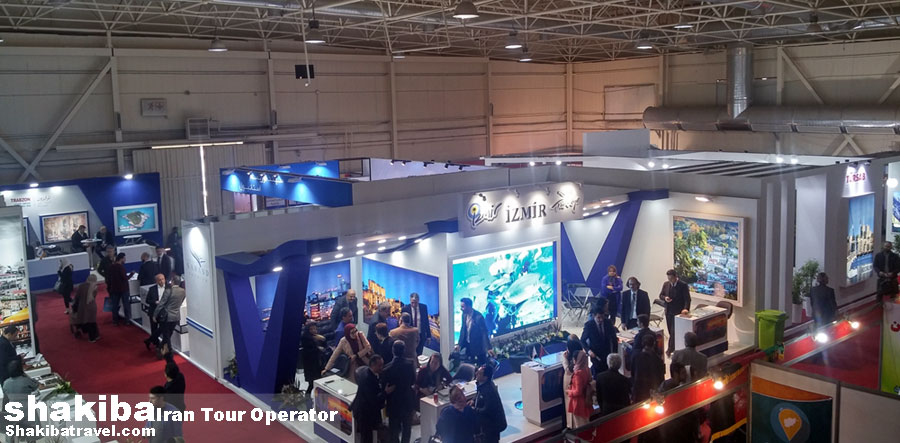
The motto of the exhibition was “Tourism and Digital Transformation” inspired by the motto of the World Tourism Organization in 2019. Due to the multifaceted nature of tourism, tourism-related industries, including transportation companies, insurance, banks, residential complexes, travel agencies, schools and educational institutions, free zones, specialized publications and cultural and heritage institutions were present at the 2019 exhibition. 660 Iranian companies and 57 foreign companies from 12 countries have attended this exhibition and introduced their tourism abilities.
It is necessary to get an Iran visa invitation letter (LOI) from a sponsor in Iran by the US, UK, and British citizens. Read more
Fitzgerald begins the three school partners’ legend: “A man named Nizam al-Mulk with his friends, Hassan-i Sabbah and Omar Khayam, promised each other in their childhood which if one rose to prominence, the lucky person would not forget the other two …”
Persian henna tattoo is applied for bridal preparation and ceremonies as a sign of blessing, joy, and beauty. Read more
Gazor Khan Village
Gazor khan village lies in Alborz Mountain, 110 km northeast of Qazvin city. The word “Gazor Khan” in the word means the laundry of elders and khans because numerous springs in the village have made this place a good one to wash. The livelihood of most people in the Gazor Khan village is through farming and animal husbandry activities. The scenery of cherry orchards in the spring, summer and autumn, looped alleys and old houses make a beautiful sign in mind which is an original pattern of former rural space. Of course, the handicrafts of villagers such as rug weaving and Jajim weaving are an important part of Gazor Khan.
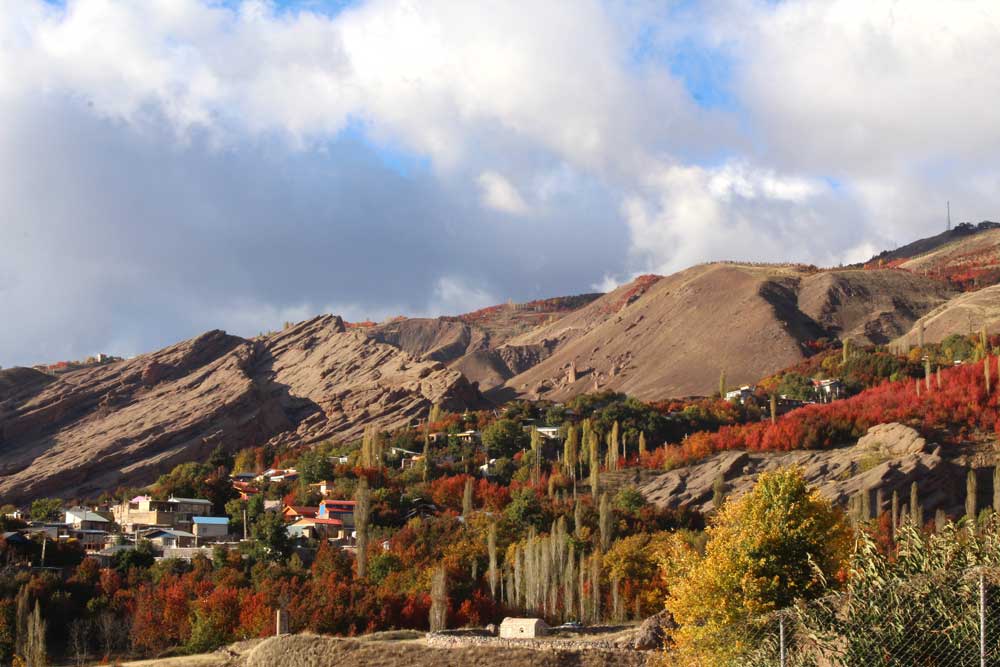
Alamut, a Castle in Gazor Khan
This village, located at the bottom of the famous castle of Alamut, undoubtedly has a close link with Alamut Castle and its tense history. Alamut Castle was developed in the 11th century by the Ismaili missionary, Hassan-i Sabbah and his followers, and used as headquarters. The Alamut castle was strategically unreachable for Ismaili enemies with its four sides ending at the precipices. It consists of two parts: ‘up castle’ and ‘down castle’. The residence of Hassan-i Sabbah was in the ‘up castle’, which for 35 years led the Nizari Ismailis. They developed an irrigation network and planted many trees around the castle. Due to the presence of water, various medicinal herbs also began to grow in the area.
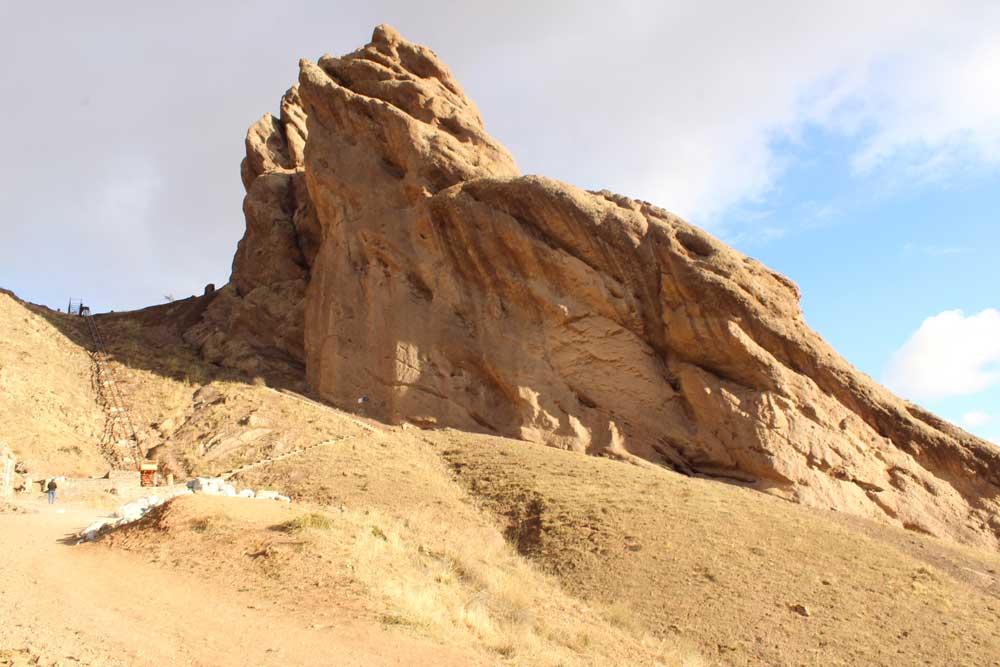
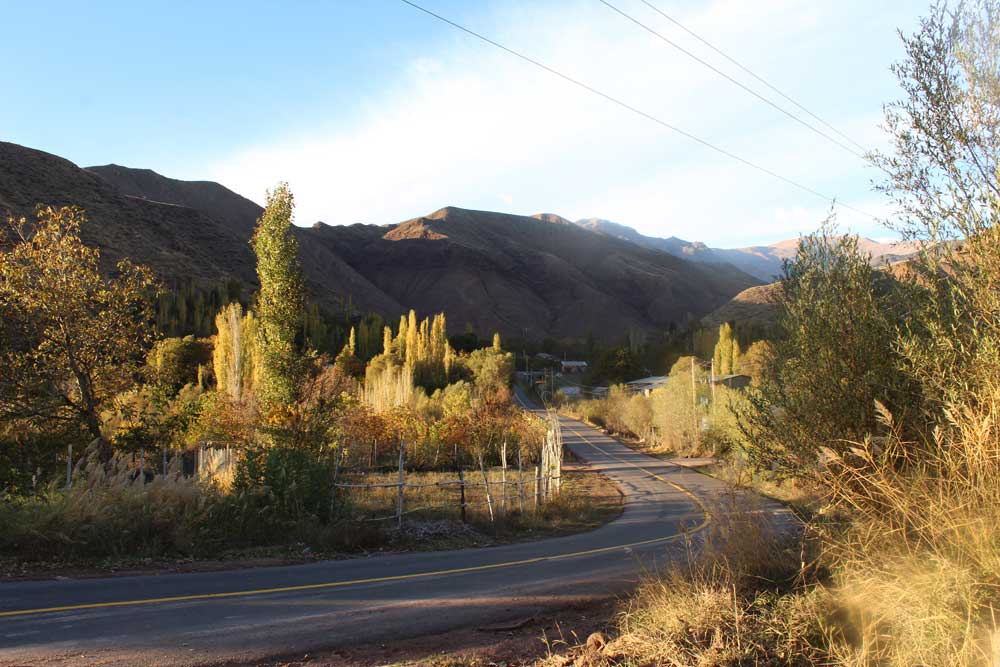
The most famous historical monuments
In Gazor Khan Village, there is a building consisting of an old mosque and a rectangular tomb that the inscription on the wall of the tomb shows the repair date of the building which reaches 1448 AD. When you open the door of the tomb, eighteen graves covered with plaster are placed side by side. The village elders believe that some of these graves may be the tomb of Ismaili leaders. More than anything else, the old plane tree in the middle of the square draws everyone’s attention. The age of this tree, which dates back to about a thousand years ago, unconsciously reminds Hassan-i Sabbah to us. Who knows, maybe Hassan-i Sabbah has planted this tree.

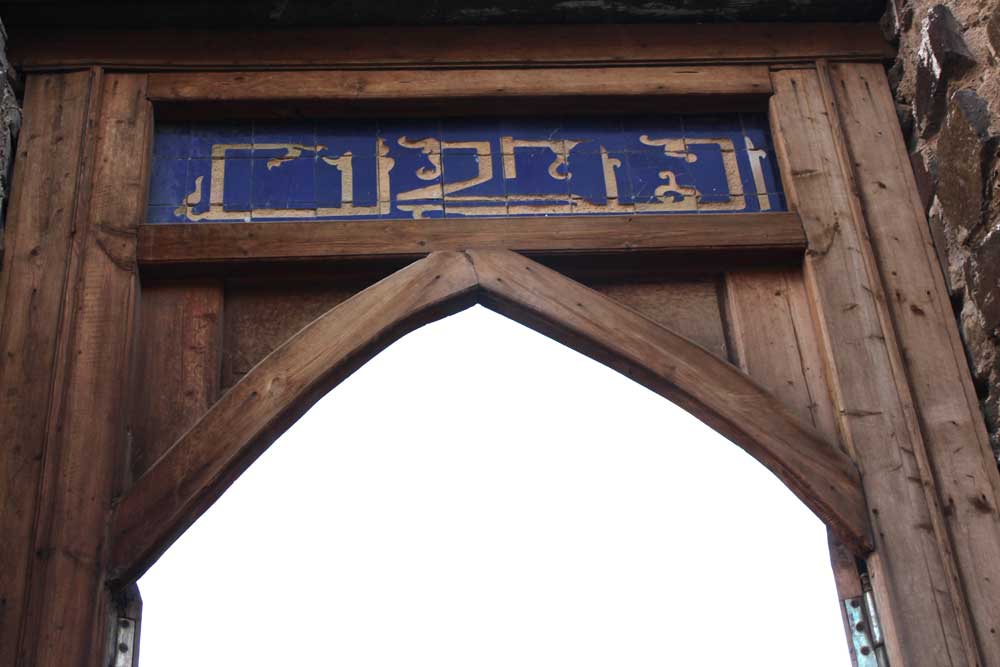
Andej Valley
Andej valley is one of the most spectacular areas around the Alamut Castle, which remembers the habitat of the early humans. The valley’s reputation is due to its cavernous rocks. The villagers say Ismailis monitored the Alamut Castle through Andej valley.
Assassin’s Creed games
Assassin’s Creed games are a mixture of imagination and historical reality. The scenario of these games shows how a small group who loves killing brings the world to chaos and fear. It is a story that seems to have happened in Alamut.
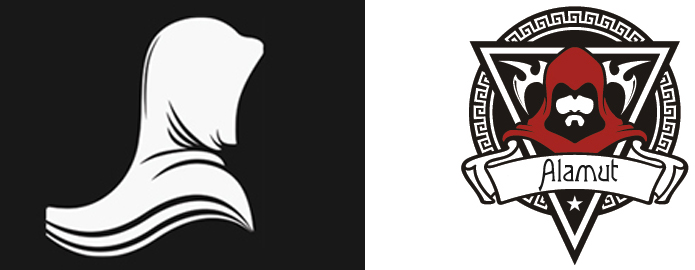
But a question always lies in the minds of people, how much of Assassin legend is true? Were the Assassins real? All historical facts which are adopted into the Assassin’s Creed universe refer to the Alamut Castle that was controlled by a missionary named Hassan-i Sabah and his followers. This tale began in the medieval Middle East and concentrated on the sect of assassins.
Are Assassin’s Creed games based on reality?
The Assassin’s Creed tells a story of Hassan-i Sabbah who is the leader of Nizari Ismailis. Few people find in history that they have the power, bravery and recklessness of him. He was beyond time and place and a sample for all liberators. He had a small squad in the garrison of Alamut. They are young students and warriors, and the only purpose is to sacrifice themselves in the battle for Ismailism. The Assassins had to be patient, apathetic and generally intelligent.
The assassin used blades disguised as daily items like an ink writing pen. They never attacked from behind and did not use poison to destroy their enemies. The method of their assassination was to kill directly with the killer’s devotees. However, the theme of Assassin’s Creed games is against these realities. They tried to create peace not only within the world but within the individual.
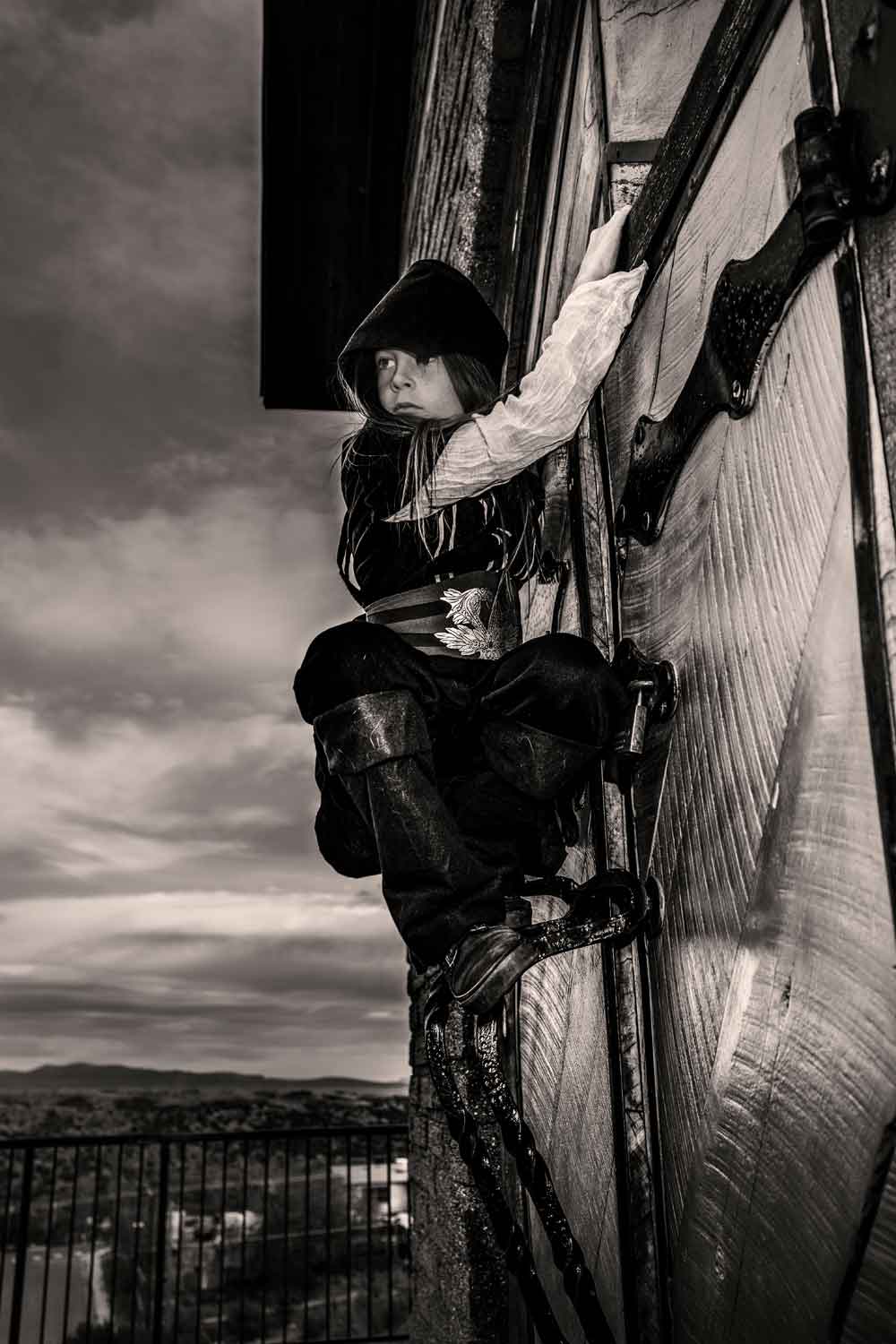
The assassin’s motto “Nothing is true, and everything is permitted “was a bit differently laughing his absolute reality always permitted. They see the world the way it really is and hope that one day all humanity might see.
Assassin order until the modern era
From past to present, Assassins whose dimensions are still in the halo of mystery and mythology. In the new era, the Assassin legends in Europe and the U.S were the source of inspiration for many films and computer games. However, for someone whose excitement brings him to Assassin’s background at any moment, nothing is more attractive than stepping into the Assassin’s origin as Alamut and imagine himself a moment with his closed eyes at that time.
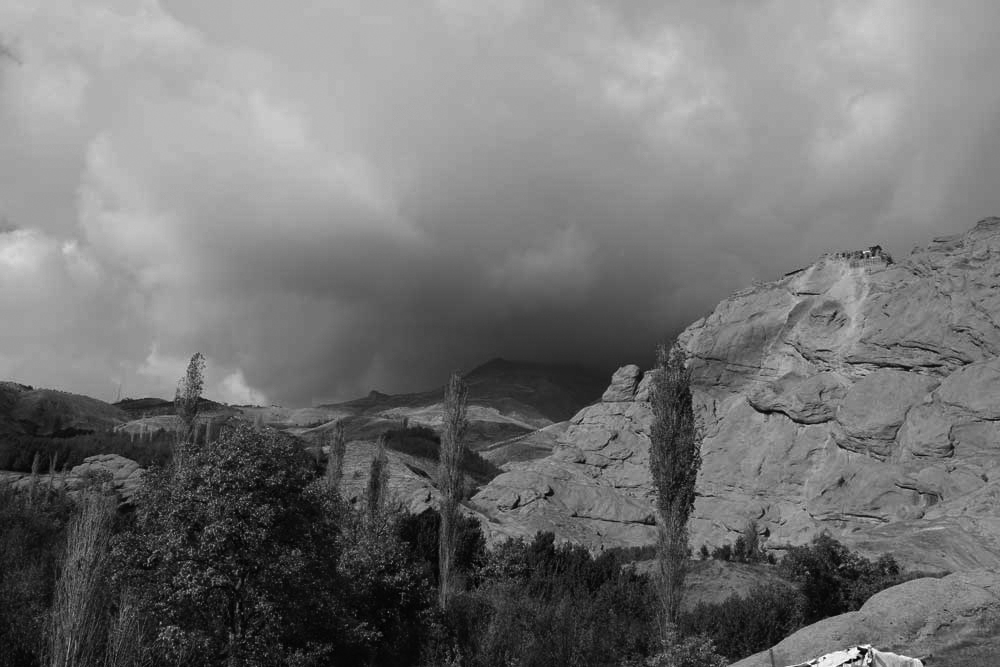
Assassins
The Assassins refer to an Islamic sect called Nizari Ismailis. They were followers of Hassan-i Sabbah who gathered at Alamut Castle in the 11th century to defend the people against the oppression of the tyrannical governments of that time. The main occupation of these people was the pharmacy and export to various parts of the world. The Assassin is pronounced “Hashashin” in Arabic, and means a pharmacist or druggist. For this reason, the missionaries of this sect are Assassin.
Assassins legends
Assassination is as old as human life. The word “assassin” implies a professional killer with a high-profile target for political reasons. The “assassin” is the main Arabic word which comes to European languages during the Crusades and the Middle Ages wars. Assassin is pronounced “Hashashin” in Arabic, and means a pharmacist or druggist. During the Crusades wars and later on, the Ismaili history has combined with many myths, one of which was the use of marijuana by the Ismailis.
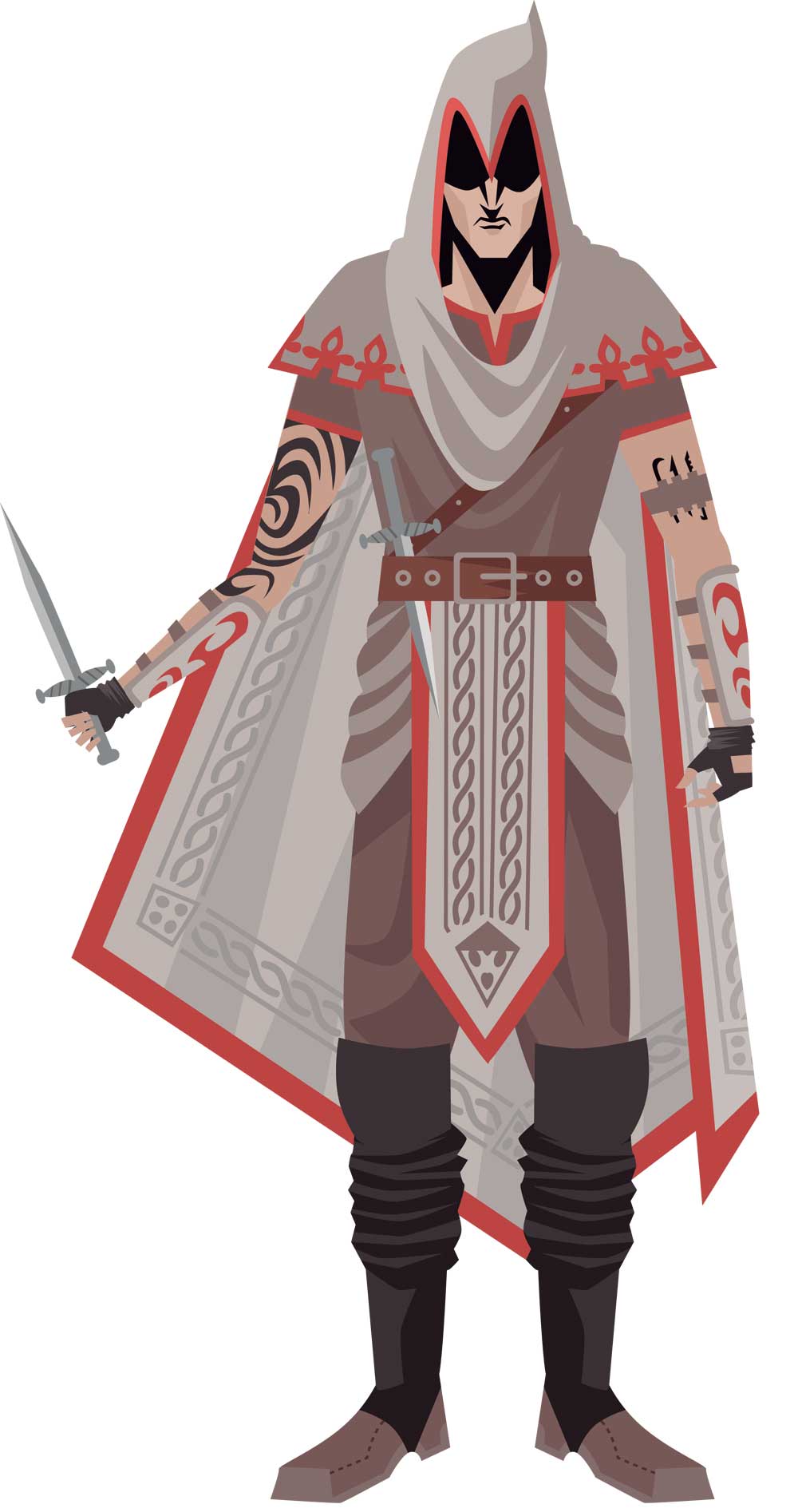
An assassin soldier kills an elected leader
Hashashin was famous for how to kill people. There has always been a halo of mystery around Hashishin as a dreaded group, so everyone adds new details to the legend of the Assassins. More ever, Marco Polo was one of the most influential people in this story. So according to Marco Polo’s narrative, Assassins’ followers went to a paradise stocked with excellent food and beautiful women by using marijuana. Then Ismaili leader told them “if you would like to go back to paradise once again, you should obey my commands.” He encouraged them to assassination and killing in this way. The Assassin refers to an Islamic sect called Nizari Ismailis.
Assassins of Alamut
The assassins of Alamut date back to the 11th and 12th centuries. The assassins of Alamut headquarter was in Alamut castle, which mountainous position had a significant advantage over its enemies. Hassan Sabbah founded the Ismaili state in Iran. According to Fitzgerald’s words in the introduction to the Rubaiyat of Omar Khayyam, he was the Seljuk minister’s close friend, Nizam al-Mulk.
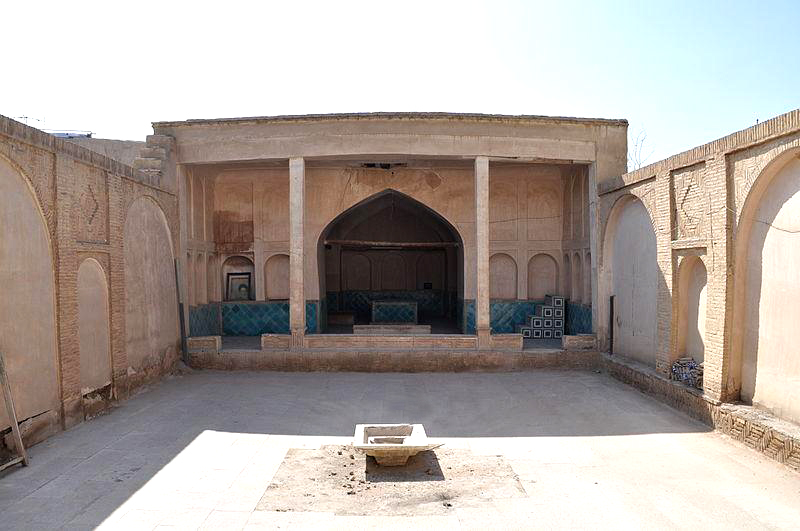
Nizam al-Mulk Mausoleum, Isfahan
Besides Alamut, Lambsar Castle, Shahdezh Castle and Rudkhan Castle were other assassins of Alamut’s basis.
In other words, Seljuks and Abbasi caliphate were among the most important enemies of the Assassin. They struck fear and daggers into the hearts of mostly princes, officials, ministers and religious figures and the crusaders. For this reason, any assassination carried out at any place referred to the Assassin. Further more, one of the reasons for knotting the word assassin with murder is the same.
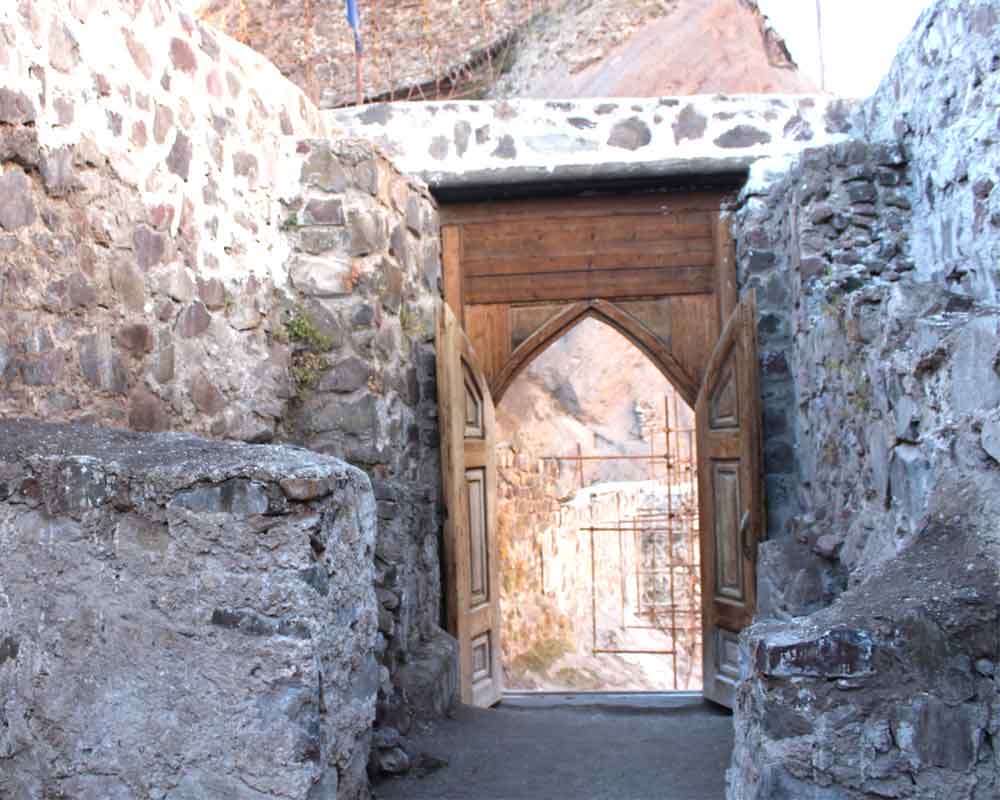
The gate of Alamut Castle
The Downfall of the Assassins
Finally, the downfall of Hashashin began when they inevitably fought against their enemies on two different fronts (Sham and Iran). While the state of Egypt was at war with the Europeans in Sham, the Ismailis as a regional power were a great danger to the ruler of Egypt. However, their most important enemy was the Mongols who eventually destroyed and eliminated their order. After several years of struggle, the Ismailis failed to maintain their own government but created the myths that have continued for many years to come.
Squat toilet in Iran
Squat toilet in Iran is similar to what you can expect in many countries of Asia. It is the default found in public buildings, shopping areas and restaurants, but touristic hotels have western toilets (sit-down style) known as “Farangi Toilet / توالت فرنگی” for the guests. In public spaces, the women and men’s restrooms are separated, and you should pay attention to the sign.
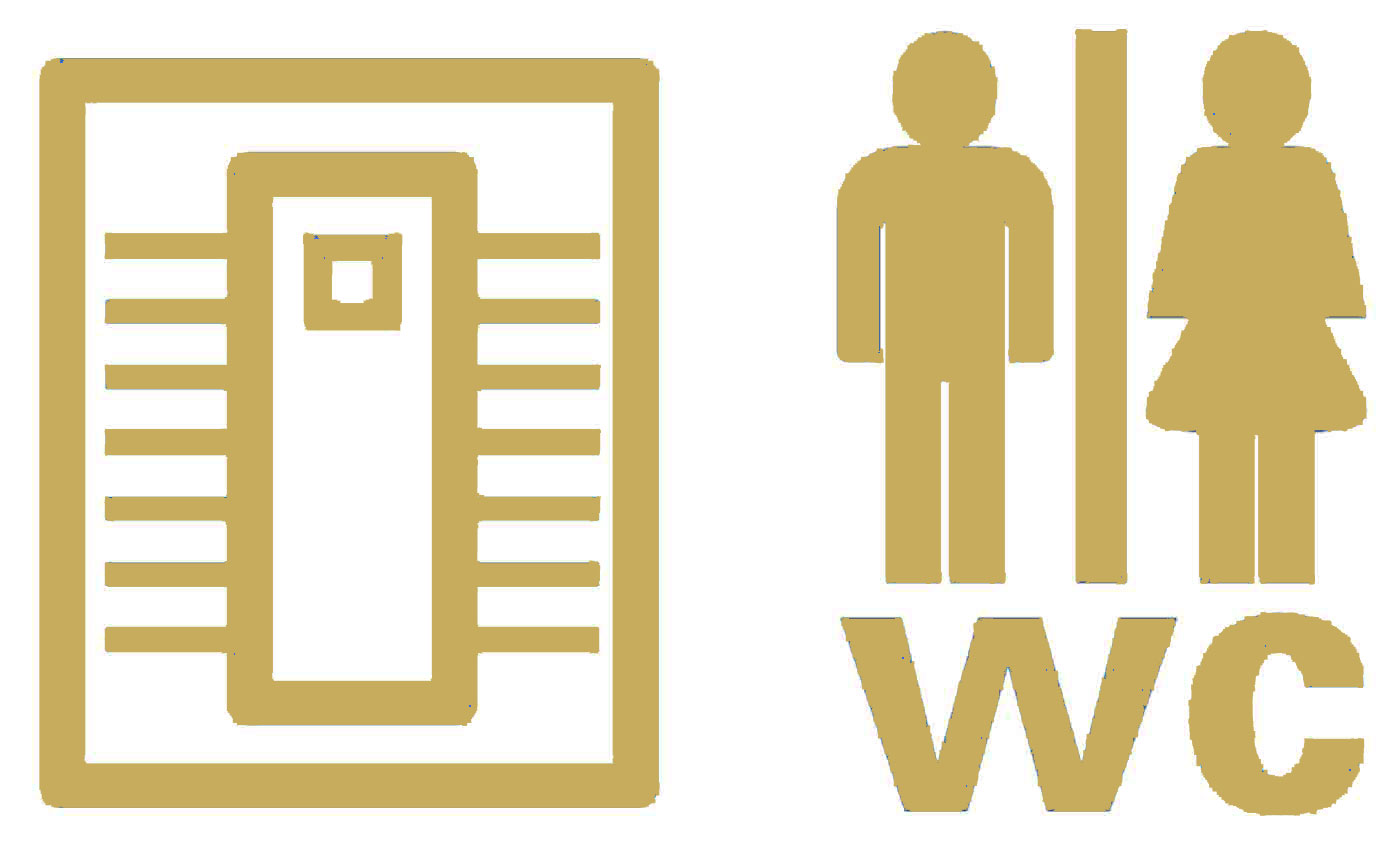
Iranian toilet is used by squatting unlike a western toilet has a sit-down style. When you travel to Iran, you won’t end up using a squat toilet, and you ultimately have to face your fears.
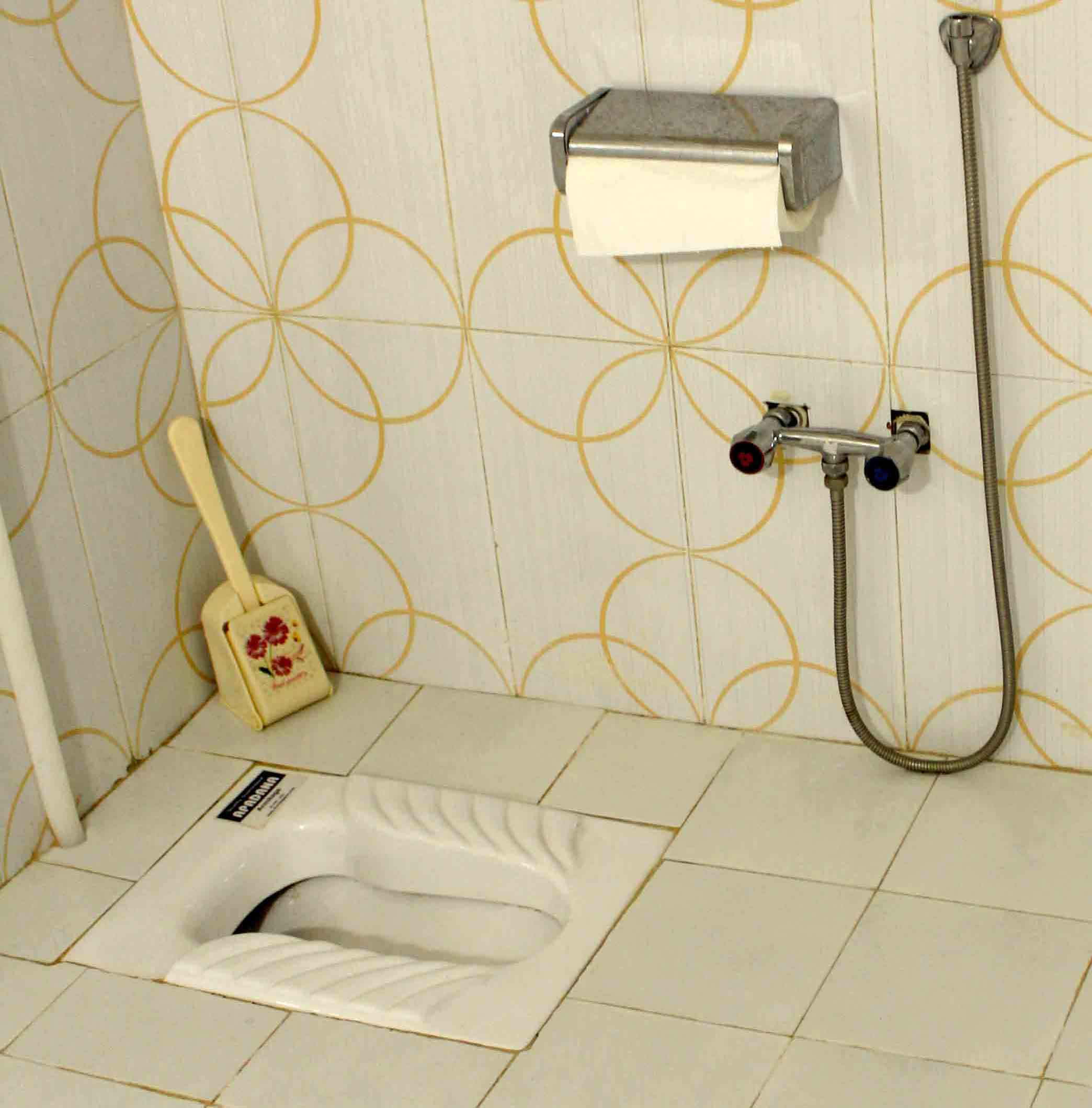
How to use the squat toilet
Squat toilet consists of a hole in the ground and the water hose on the right side of the wall. According to the cultures, there are many different ways to clean oneself after using the toilet. Having access to water in the toilet is essential for Iranians.
The left hand and a small water pipe take over duty for toilet paper, and you know why toilet paper is often not available.
Tips to know how to use the squat toilet:
- You should take off your shoes at the door before entering and use the slippers inside.
- Take your coat or jacket off
- It’s better to take out everything from your pockets before squatting.
- It would help if you take your pants down above your knees.
- You can use water to clean yourself. Hold the water tap with the right hand and use the other hand for cleaning. Don’t worry; you could wash your hands with soap after that!
- Watch out! Hot water can make much injuring.
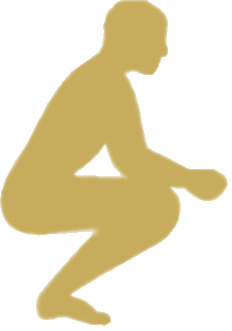
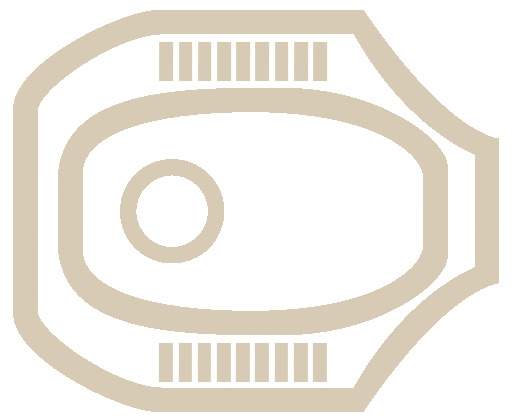
In some of the toilets along with roads and streets, the Aftabeh (water vessel) is used instead of the water hose. For the use of Aftabeh, you should:
- Fill it with some water
- Hold it with the right hand
- Use the left hand for cleaning
A large population in Asia uses the squat toilet without any personal injury. Many medical experts believe that using squat toilets are better for colon health. It is also easier to clean and one of the cleanest toilet in the world.
Iran is safe
Iran is as safe as the UK when it comes to security, according to a new interactive map showing the risk level around the world.
The 2019 Travel Risk Map, launched by global risk experts International SOS in collaboration with Control Risks, shows the danger level in each country and territory based on the current threat posed to travelers by political violence (including terrorism, insurgency, politically motivated unrest and war), social unrest (including sectarian, communal and ethnic violence) and violent and petty crime.
Factors such as the robustness of the transport infrastructure, the state of industrial relations, the effectiveness of the security and emergency services and the country’s susceptibility to natural disasters are also taken into consideration. The map lists five categories of risk: insignificant, low, medium, high and extreme. Very few countries manage to make it into the “insignificant” bracket; in Europe, only Luxembourg, Denmark, Slovenia, Switzerland, Norway, Finland, Iceland and Greenland are put in this category.
The majority of European countries are deemed low risk, including the UK; as are Iran, Jordan, Oman, Qatar, the UAE, Kuwait, Georgia, Azerbaijan, Armenia and Uzbekistan in the Middle East. Canada, the US, Australia and New Zealand are all low risk too. “Extreme” risk countries are almost exclusively in Africa and the Middle East, including Syria, Yemen, Afghanistan, Libya, South Sudan and Somalia.
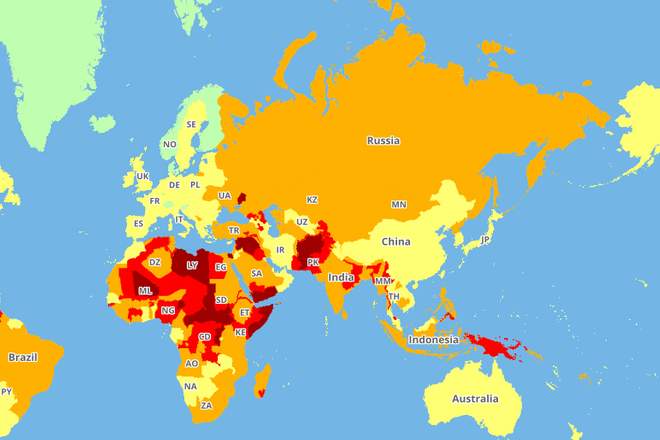
The Travel Risk Map 2019 maps out security risks across the world (International SOS and Control Risks)
The map was released in conjunction with the Ipsos MORI Business Resilience Trends Watch 2019 report. The latter shows that a significant number of business decision-makers – 43 percent – expect travel risks to rise in 2019.
Although some 47 percent think risks have increased over the past year, this represents a 16 percent decrease from 2017, when 63 percent said risk had increased. Alongside the Travel Risk Map, a Medical Risk Map and Road Safety Risk Map for 2019 have been launched.
The medical ratings are given by assessing a range of health risks and mitigating factors, including infectious diseases, environmental factors, the standard and availability of local emergency medical and dental care, access to quality pharmaceutical supplies, the requirement for medical evacuation and cultural, language or administrative barriers. The UK, along with most of Western and Central Europe, is designated “low” risk status.
Highest security risk countries
- Syria
- Yemen
- Afghanistan
- Iraq
- Libya
- Mali
- Central African Republic
- South Sudan
- Somalia
- The Gaza Strip
- Part of Egypt
- Part of eastern Nigeria
- Part of eastern Ukraine
Lowest security risk countries
- Luxembourg
- Switzerland
- Slovenia
- Norway (including Svalbard)
- Denmark (including the Faroe Islands)
- Finland
- Greenland
- Iceland
- Seychelles
- Cape Verde
(Reference: independent)
Shakiba Travel Co.

Iran Tours
Call Us Today!
Whatsapp:
+98 912 054 0429
(DE) +49 178 391 2435
Email:
info@shakibatravel.com
Phone:
+98 31 366 98742
Fax:
+98 31 366 92756
